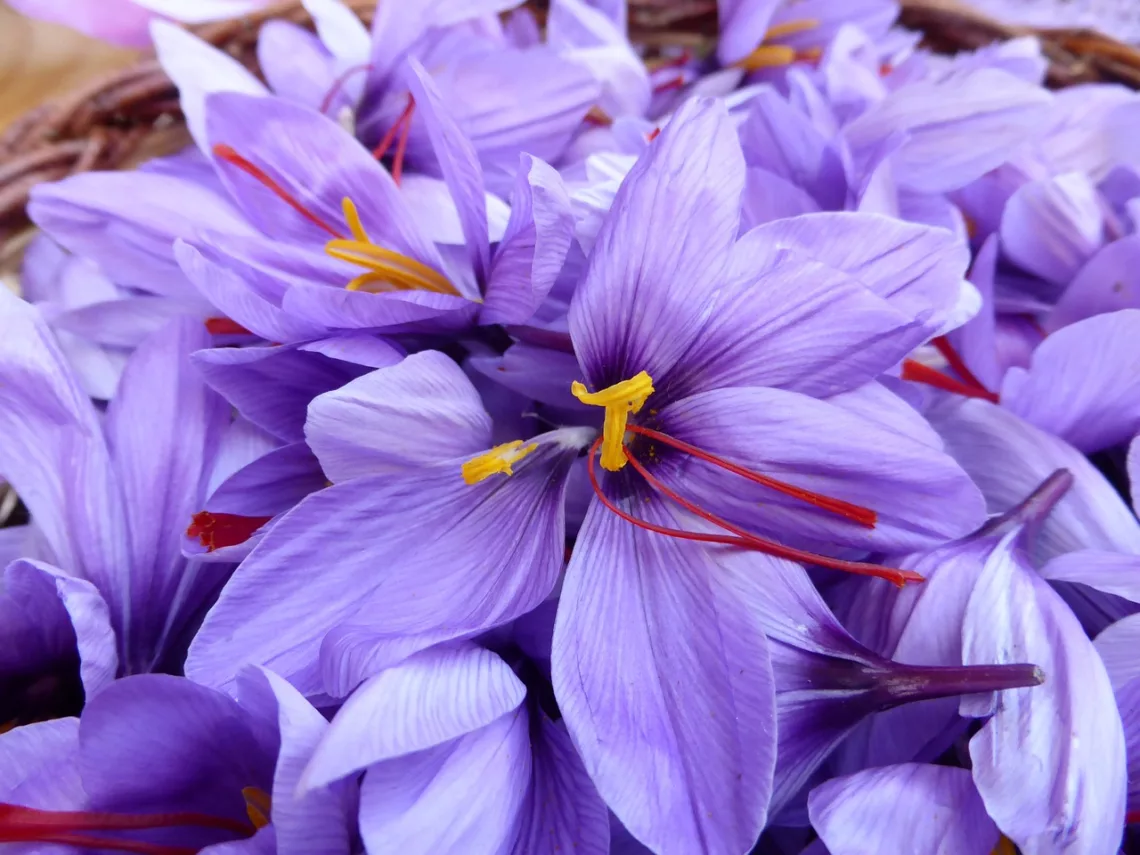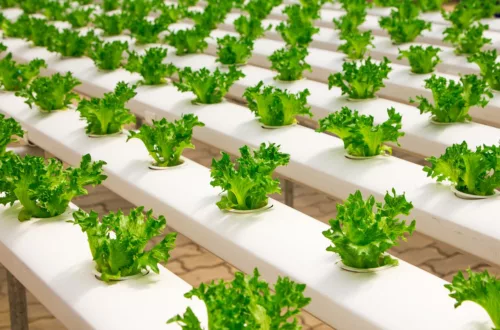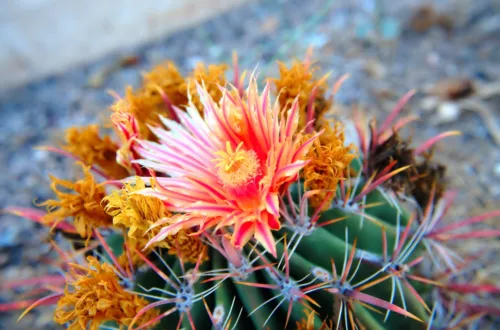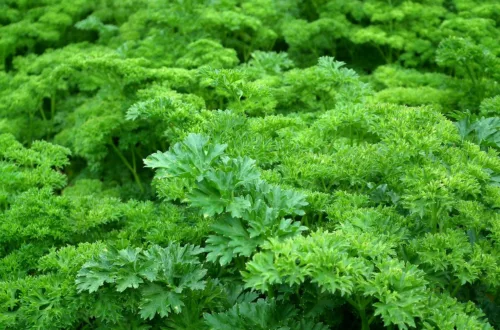Are you looking to grow herbs in your home garden and wondering which ones are the most expensive? Look no further! We have researched and compiled a list of the most expensive herbs that you can grow in your very own herb garden. Not only will these herbs add flavor and variety to your home-cooked meals, but they can also provide a lucrative source of income if you choose to sell them.
Disclaimer: This article is provided for informational purposes only and should not replace professional medical advice. Please consult with a qualified healthcare practitioner or herbalist before using any herbal remedies.
One of the most expensive herbs that you can grow is saffron. This spice is derived from the dried stigmas of the saffron crocus flower and is prized for its distinct flavor and vibrant color. Saffron is also known for its medicinal properties and is used in traditional medicine to treat a variety of ailments. Growing saffron can be a bit tricky, but with the right conditions and care, you can harvest a valuable crop that can fetch a high price in the market.
Another herb that can be quite expensive is vanilla. While vanilla is commonly associated with desserts and sweet treats, it can also add a unique flavor to savory dishes. Vanilla is derived from the seed pods of the vanilla orchid and requires a warm, humid climate to grow. The process of cultivating and harvesting vanilla can be labor-intensive, which contributes to its high price. However, with the right growing conditions and patience, you can produce a crop of high-quality vanilla that can be sold at a premium price.
Understanding the Value of Expensive Herbs~ Most Expensive Herbs You Can Grow
When it comes to growing herbs, it’s important to understand the value of expensive herbs. While some herbs may be more costly than others, they often come with a range of benefits that make them worth the investment. In this section, we’ll explore some of the most expensive herbs you can grow and why they’re so valuable.
World’s Most Expensive Spices
Some of the most expensive herbs in the world are actually spices. Saffron, for example, is the most expensive spice in the world and can cost up to $10,000 per pound. Vanilla is another expensive spice, fetching prices of up to $600 per pound. While these prices may seem exorbitant, they reflect the high demand for these spices and their unique flavor profiles.
Potential Medicinal Uses
Many expensive herbs also have potential medicinal uses. For example, ginseng is a popular medicinal herb that is known for its ability to boost energy and reduce stress. It can be quite expensive, with prices ranging from $20 to $500 per pound depending on the quality. Other expensive medicinal herbs include echinacea, which is used to boost the immune system, and St. John’s Wort, which is used to treat depression.
Culinary vs. Medicinal Herbs
While some expensive herbs are used primarily for culinary purposes, others are used primarily for medicinal purposes. It’s important to understand the difference between culinary and medicinal herbs so you can choose the right herbs for your needs. Culinary herbs like rosemary, thyme, and basil are used to add flavor to dishes, while medicinal herbs like chamomile and lavender are used to promote relaxation and reduce stress.
In conclusion, while expensive herbs may seem like an unnecessary expense, they often come with a range of benefits that make them worth the investment. Whether you’re looking for a unique flavor profile for your dishes or a natural way to boost your health, expensive herbs can offer a range of benefits that make them a valuable addition to any herb garden.
Choosing the Right Herbs to Grow~ Most Expensive Herbs You Can Grow
When it comes to growing herbs, choosing the right ones can make all the difference. Not only do you want to grow herbs that you enjoy using in your cooking or for medicinal purposes, but you also want to choose ones that are profitable to grow. In this section, we will discuss how to choose the right herbs to grow, including profitable crop selection and considering climate and soil type.
Profitable Crops Selection
If you’re looking to grow herbs that are profitable, then you’ll want to consider growing saffron crocus. Saffron is one of the most expensive herbs in the world, and it’s relatively easy to grow. However, it does require a lot of work to harvest, as the stigmas need to be hand-picked from the flowers. Other profitable herbs include basil plant, which is always in high demand and can be sold fresh or dried.
Considering Climate and Soil Type
When choosing herbs to grow, it’s important to consider your climate and soil type. Some herbs, like basil, prefer full sun, while others, like mint, prefer partial shade. Additionally, some herbs, like rosemary, prefer mild winters and can be damaged by harsh cold weather. Consider the climate and soil type of your area to choose the right herbs to grow.
In conclusion, choosing the right herbs to grow can be a fun and profitable venture. Consider growing saffron crocus or basil plant for a profitable crop, and be sure to consider your climate and soil type when making your selections. With the right choices, you can enjoy a bountiful herb garden that is both useful and beautiful.
Cultivation Techniques for High-Value Herbs~ Most Expensive Herbs You Can Grow
Growing high-value herbs can be a lucrative venture for those with a green thumb. However, it takes more than just planting seeds and hoping for the best. Here are some cultivation techniques to help you grow the most expensive herbs:
Optimal Planting Strategies
To ensure a successful harvest, it’s important to choose the right location and planting strategy. Most high-value herbs prefer well-drained soil, so choose a location that has good drainage. If your soil is not well-draining, consider adding sand or other organic matter to improve drainage.
When it comes to planting, make sure you follow the instructions on the seed packet. Some herbs prefer to be started indoors and then transplanted outside, while others can be planted directly in the ground. For example, lavender prefers moist soil and can be planted in the spring or fall. On the other hand, saffron prefers sandy soils and should be planted in the fall.
Maintenance and Care
Once your herbs are planted, it’s important to maintain and care for them properly. Regular watering is essential, but be careful not to overwater. Most herbs prefer to dry out between watering sessions. In addition, make sure to fertilize your herbs regularly to keep them healthy and growing strong.
It’s also important to monitor your herbs for pests and diseases. Aphids, spider mites, and whiteflies are common pests that can damage your herbs. To prevent these pests, consider using natural pest control methods such as companion planting or applying neem oil.
Finally, make sure your herbs are getting the right growing conditions. Some herbs prefer full sun, while others prefer partial shade. Make sure you research the specific growing conditions for your herbs and adjust accordingly.
By following these cultivation techniques, you can grow high-value herbs that will be in demand by chefs, herbalists, and other buyers. With a little patience and care, you can turn your love of gardening into a profitable business.
Harvesting and Storing Premium Herbs~ Most Expensive Herbs You Can Grow
When it comes to growing herbs, the quality of the harvest can make all the difference in the world. Harvesting at the right time and storing the herbs properly can ensure that you get the most out of your crop. In this section, we will discuss the best harvest time and preservation methods for premium herbs.
Best Harvest Time
The best time to harvest herbs is when the plant is at its peak. This is usually when the plant has reached maturity and is about to flower. The exact time can vary depending on the type of herb you are growing, but generally, the leaves should be harvested before the flowers appear. This is because the leaves contain the highest concentration of essential oils, which give the herbs their flavor and aroma.
Preservation Methods
Once you have harvested your premium herbs, it’s important to store them properly to maintain their quality. The best way to do this is by drying the leaves and storing them in an airtight container. Drying the leaves will remove any excess moisture, which can cause the herbs to spoil. An airtight container will prevent air and moisture from getting in, which can also cause the herbs to spoil.
There are a few different methods you can use to dry your herbs. One method is to tie the herbs in bundles and hang them upside down in a dry, well-ventilated area. This will allow the leaves to dry naturally and retain their flavor and aroma. Another method is to use a dehydrator, which will dry the leaves quickly and efficiently.
Once your herbs are dry, you can store them in an airtight container. Be sure to label the container with the name of the herb and the date it was harvested. This will help you keep track of how long the herbs have been stored and when they need to be replaced.
In conclusion, harvesting and storing premium herbs is an important part of growing herbs. By harvesting at the right time and storing the herbs properly, you can ensure that you get the most out of your crop. Whether you are growing herbs for personal use or for sale, following these tips will help you produce high-quality herbs that are sure to impress.
Maximizing Yields~ Most Expensive Herbs You Can Grow
Growing herbs can be a lucrative business, but maximizing yields is essential to make the most profit. Here are some ways to increase your herb yields:
Advanced Growing Techniques
Using advanced growing techniques can help you get the most out of your herbs. Hydroponic systems, for example, can produce higher yields than traditional soil-based systems. By controlling the nutrients and water supply, you can optimize plant growth and increase yields.
Another technique is to use a square foot gardening system. This method involves planting herbs in a small area, usually one square foot, and maximizing the use of space. By planting herbs close together and using vertical space, you can increase the number of plants per square foot and maximize your yields.
Scaling Your Herb Production
Scaling your herb production is another way to increase yields. Once you have optimized your growing techniques, it’s time to scale up your production. This can be achieved by increasing the number of plants you grow or by growing larger, more mature plants.
To scale up your production, you’ll need to invest in additional equipment and infrastructure. This can include more grow lights, a larger growing area, and additional staff to help with planting and harvesting.
By using advanced growing techniques and scaling up your production, you can maximize your herb yields and increase your profits. Remember to always strive for the best results and never compromise on quality.
Economic Aspects of Herb Gardening~ Most Expensive Herbs You Can Grow
Growing herbs can be a profitable business if you can calculate your profit margins correctly. In this section, we will discuss the economic aspects of herb gardening, including calculating profit margins and market demand insights.
Calculating Profit Margins
To calculate your profit margins, you need to consider the cost of production, including seeds, soil, fertilizer, water, and labor. You also need to factor in the cost of packaging and transportation. Once you have calculated your total costs, you can determine your selling price.
The profit margin is the difference between the selling price and the cost of production. A higher profit margin means that you are earning more money per unit sold. To increase your profit margin, you can consider selling your herbs directly to consumers at farmer’s markets or through online platforms. By eliminating the middleman, you can keep more of the profits.
Market Demand Insights
To ensure that you are growing the most expensive herbs, you need to research the market demand. Some herbs are more in demand than others, and you can charge a premium for them. For example, herbs like saffron, vanilla, and ginseng are some of the most expensive herbs in the world.
You can sell your herbs to grocery stores or restaurants, but keep in mind that they will take a percentage of the profits. Alternatively, you can sell your herbs directly to consumers at farmer’s markets or through online platforms. By doing so, you can charge a higher price and keep more of the profits.
In conclusion, herb gardening can be a profitable business if you can calculate your profit margins correctly and research the market demand. By selling your herbs directly to consumers and focusing on high-demand herbs, you can increase your profit margins and grow a successful business.
Leveraging Herbs for Health and Wellness~ Most Expensive Herbs You Can Grow
Herbs have been used for centuries in traditional medicine for their medicinal values. They are a natural and effective way to promote health and wellness. In this section, we will explore the benefits of using herbs for health and wellness.
Herbs in Traditional Medicine
Herbs have been used in traditional medicine for thousands of years. They have been used to treat a variety of ailments from pain relief to boosting the immune system. Ayurvedic medicine, which originated in India, is one example of a traditional medicine that utilizes herbs. Ayurvedic medicine uses herbs to balance the body and promote wellness.
Some herbs that have been used in traditional medicine include:
- Turmeric: used for its anti-inflammatory properties
- Ginger: used for its digestive properties
- Echinacea: used to boost the immune system
- Valerian root: used to promote relaxation and sleep
Modern Health Applications
In addition to their traditional uses, herbs are also being used in modern health applications. They are being studied for their medicinal values and are being incorporated into modern medicine. Some examples of modern health applications of herbs include:
- Pain relief: Some herbs, such as ginger and turmeric, have been found to have anti-inflammatory properties and may help with pain relief.
- Immune system: Herbs such as echinacea and elderberry have been found to boost the immune system and may help prevent illness.
- Medicinal values: Herbs such as ginseng and ginkgo biloba are being studied for their potential medicinal values in treating conditions such as Alzheimer’s disease and depression.
In conclusion, herbs have been used for centuries in traditional medicine and are now being studied for their modern health applications. They are a natural and effective way to promote health and wellness.
Landscaping with Herbs~ Most Expensive Herbs You Can Grow
When it comes to landscaping, herbs can be a great addition to any garden. Not only are they beautiful plants, but they can also be used for cooking, medicinal purposes, and even aromatherapy. In this section, we will explore some of the best herbs for landscaping, including decorative and aromatic choices, as well as those that are perfect for rock and window gardens.
Decorative and Aromatic Choices~ Most Expensive Herbs You Can Grow
Herbs such as lavender, rosemary, and thyme are not only beautiful plants, but they also have a wonderful aroma that can be enjoyed in any garden. Lavender, for example, is a great choice for a decorative herb as it has beautiful purple flowers and a lovely fragrance. Rosemary, on the other hand, has a unique upright growth habit and a strong scent that can fill the air. Thyme, another aromatic herb, is a great choice for ground cover as it has a low-growing habit and can spread quickly.
Herbs for Rock and Window Gardens~ Most Expensive Herbs You Can Grow
If you have a rock garden or a window garden, there are a few herbs that can thrive in these environments. One great option is creeping thyme, which can be grown between rocks or in a window box. It has a low-growing habit and can spread quickly, making it a great choice for ground cover. Another option for a rock garden is chamomile, which has beautiful white flowers and a delicate fragrance. It can also be used for medicinal purposes, making it a great addition to any garden.
In conclusion, herbs can be a great addition to any garden, whether you are looking for a decorative plant or one that can be used for cooking or medicinal purposes. By choosing the right herbs for your landscaping needs, you can create a beautiful and functional garden that you can enjoy for years to come.
Historical and Cultural Significance~ Most Expensive Herbs You Can Grow
Growing herbs has been an important part of human culture for thousands of years. From ancient civilizations to modern times, herbs have been used for medicinal purposes, culinary arts, and even spiritual practices. In this section, we will explore the historical and cultural significance of herbs, with a focus on their role in ancient traditions and American history.
Herbs in Ancient Traditions
Herbs have played a significant role in many ancient traditions, including those of the Indian subcontinent, the Middle East, and ancient Greece. In Indian cuisine, herbs such as turmeric, cumin, and coriander are staples in many dishes. These herbs not only add flavor but are also believed to have medicinal properties. Similarly, in the Middle East, herbs such as mint, parsley, and thyme are commonly used in cooking and are believed to have health benefits.
The ancient Greeks also placed great importance on herbs. They believed that herbs had the power to heal both the body and the mind. For example, sage was used to improve memory, while thyme was used to relieve respiratory problems. The Greeks also believed that certain herbs had spiritual properties and could be used to communicate with the gods.
Herbs in American History
Herbs have also played a significant role in American history. George Washington, the first president of the United States, was an avid gardener and grew many herbs on his estate at Mount Vernon. He believed that herbs were essential for good health and used them to treat a variety of ailments.
Native Americans also had a deep respect for herbs and used them for medicinal purposes. For example, echinacea was used to boost the immune system, while white sage was used in spiritual ceremonies.
In conclusion, herbs have been an important part of human culture for thousands of years. From ancient traditions to American history, herbs have played a significant role in our lives. Whether you grow herbs for their medicinal properties, culinary uses, or spiritual significance, they are a valuable addition to any garden.
Getting Started with Your Herb Garden~ Most Expensive Herbs You Can Grow
If you’re interested in growing your own herbs, congratulations! With a little effort, you can have fresh herbs at your fingertips all year round. Here are a few tips to get started.
First Steps for Beginners
First, decide which herbs you want to grow. Some popular choices include basil, parsley, thyme, and rosemary. You can start with just a few herbs or go all out and plant a whole garden.
Next, choose a location for your herb garden. Most herbs prefer full sun, so pick a spot that gets at least six hours of sun per day. You can grow herbs in the ground, in raised beds, or in containers.
If you’re planting in the ground, make sure the soil is well-draining and has plenty of organic matter. If you’re using containers, make sure they have drainage holes and use a good quality potting mix.
Once you have your location and herbs picked out, it’s time to plant! Follow the instructions on the seed packet or plant tag for spacing and planting depth.
Yearly Gardening Cycle
In the first season, focus on getting your herbs established. Water regularly and fertilize as needed. Pinch back the tips of the plants to encourage bushier growth.
The following year, your herbs should be well-established and ready for regular harvesting. Continue to water and fertilize as needed, and keep an eye out for pests and diseases.
In the following years, your herbs will continue to thrive with regular care. You can also experiment with different varieties and growing techniques to keep things interesting.
Growing your own herbs can be a fun and rewarding hobby. With a little care and attention, you can have fresh herbs at your fingertips all year round.







